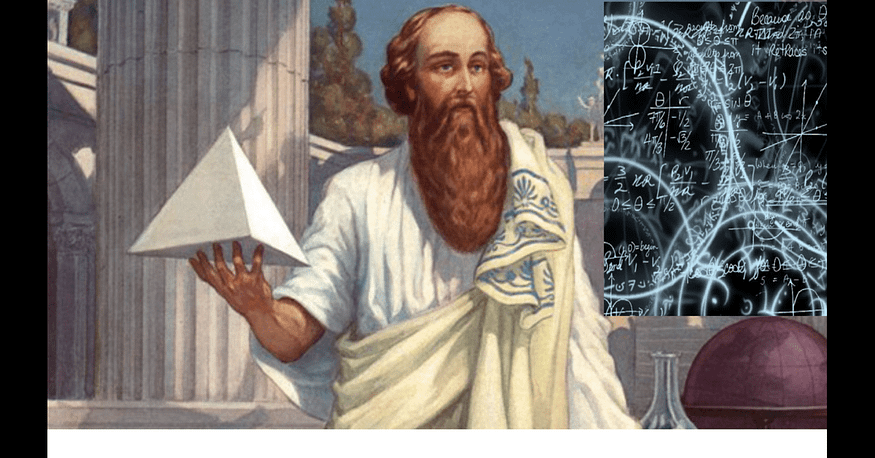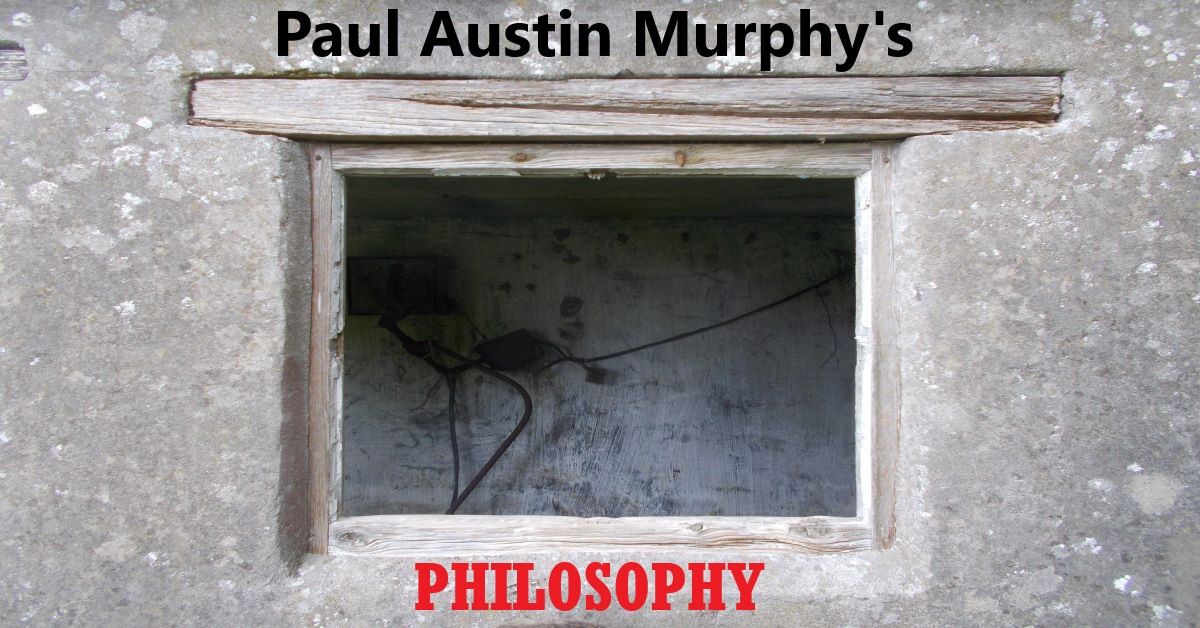
“A quark is a purely mathematical construct. It has no meaning apart from its mathematical definition. The properties of quarks — charm, colour, strangeness — are mathematical properties that have no analogue in the macroscopic world we inhabit.”
— John Horgan [See source here.]
“[If] this electricity-field strength here in physical space corresponds to this number in the mathematical structure for example, then our external physical reality meets the definition of being a mathematical structure — indeed, that same mathematical structure.”
— Max Tegmark [See source here.]
“This mode of observing nature [i.e., mathematical physics] in an unforeseen manner vindicated the Pythagorean faith.”
— Werner Heisenberg [See source here.]
Opening note:
I’m not a physicist, and the following isn’t a physics paper. It’s a philosophical essay about an important aspect of quantum mechanics. This means that some of the details about quantum states, the wave function, etc. may not be very sophisticated or detailed. However, hopefully that doesn’t matter too much in that this lack of sophistication doesn’t impact on the general philosophical point being made.
The Quantum State
Physics literature has it that there’s something before the wave function: the quantum state. The wave function is a “mathematical description” of that state. (More correctly, it describes “the quantum state of an isolated system”.)
Yet, as intuitively seen by a non-physicist, there seems to be some ambiguity here.
Firstly, take this account:
“In quantum physics, a quantum state is a mathematical entity that embodies the knowledge of a quantum system.”
Note the words “a quantum state is a mathematical entity” in the passage above. If readers take the word “is” as the “‘is’ of identity”, then we must have the following:
a quantum state = a mathematical entity
A quantum state is a mathematical entity. However, a mathematical entity isn’t always a quantum state. So the equation above isn’t symmetrical (or invertible).
All that said, this still means that there’s little room for interpretation here: a quantum state isn’t (to pre-empt words from the next quote) “a sub-microscopic [physical] system”.
Now take this account:
“A sub-microscopic system (a sub-atomic particle or set of sub-atomic particles moving under a force field or exerting a force on each other) is described by a ‘quantum state’ (or just ‘state’) which is a list of physical properties of the system that can be measured simultaneously.”
Note the words “a sub-atomic particle or set of sub-atomic particles moving under a force field or exerting a force on each other”.
So, in the two quoted passages above, distinctions are made between a quantum state and a quantum system. The question now is:
Is the quantum system itself mathematical?
The simple way around this is to argue that a “set of sub-atomic particles moving under a force field []” is itself a mathematical entity. Alternatively, it can be argued that the mathematical entity (i.e., the quantum state) describes such a sub-atomic system.
Perhaps this is a difference which doesn’t make a difference!
Perhaps a set of sub-atomic particles moving under a force field [ ] never has any reality (or existence) which is separable from the particular mathematical entity which describes it.
So, again, can it be argued that the mathematical entity and what it describes are one and the same thing?
[As already seen in the opening quote, Max Tegmark believes that they are one and the same thing.]
The Wave Function and Observables
The word “representation” (i.e., not the word “description” used in the quoted passage above) is often used in quantum mechanics too. [See here.] However, this time it’s used about the wave function, not the quantum state itself.
Here a given set of observables is represented. That is, the wave function represents a quantum state.
Yet surely it can’t all be about the mathematics…
Or can it?
There is a Pythagorean take on all this.
Observables
A neo-Pythagorean (or even some physicists) would say that observables (or “experimental observations”) are as mathematical as the quantum state itself. That’s primarily because observation in these quantum contexts is nothing like, say, observing the cat next door or even observing a neuron under a microscope…
One is even tempted to say, then, that the word “observable” shouldn’t be taken too literally.
In more basic terms, all talk of “observables” in quantum mechanics is replete with numbers and mathematical terms. (Such as “operator”, “gauge”, “Hilbert space”, “linear algebra”, “vectors”, etc.)
All that said, it’s clear that physicists do indeed observe many things when they carry out their experiments. The thing is, they just don’t observe (to return to the earlier terms) “particles”, “spin”, “forces”, etc. Of course, they do observe phenomena which (in a manner of speaking) point to particles, spin, forces, etc. Yet such things are still mathematical entities.
The Wave Function
Now we need an account of the wave function. Here’s one:
“In quantum physics, a wave function is a mathematical description of a quantum state of a particle as a function of momentum, time, position, and spin. The symbol used for a wave function is a Greek letter called psi, 𝚿.”
Here again (i.e., as with the previous account of a quantum state) we have the words “mathematical description”. We also have a reference to a “particle”. What’s more, the words “a quantum state of a particle” suggest that the particle itself is mathematical. After all, haven’t we already established that a quantum state is purely mathematical? Thus, a quantum state of a particle must be purely mathematical too.
So the fact that the (everyday) word “particle” is used here doesn’t seem to change that…
In addition, when readers see the words “momentum, time, position, and spin”, then they must remember that these things are mathematically described too. In other words, they’re part of the whole mathematical entity that is the wave function.
So, again, are momentum, time, position, spin, etc. purely mathematical entities? More accurately, are they the mathematical parts of a wave function which is itself a purely mathematical entity?
To recap.
We have a mathematical description (i.e., the wave function) of a mathematical entity (the quantum state), as well as references to the particles, spin, forces, etc. within a quantum system.
Let’s focus on a particle.
What kind of reality (or nature) does a particle have without either the quantum state or the wave function?
No reality (or nature)?
If we return to representation.
What Is Represented?
Surely where there’s a representation, then there must also be something which is represented.
Some quantum theorists argued that the wave function must have a physical (or “objective”) existence. [See here.] More famously, Albert Einstein argued — more generally — that a complete description of reality should refer directly to a physical time and space. [See here.]…
But hold on here!
There’s a difference between stating that the wave function itself has a physical reality, and stating that the wave function describes phenomena which have a physical reality.
Another way of putting this is to say that even though the wave function is purely mathematical (i.e., abstract), that which it represents (or describes) isn’t purely mathematical.
Now, to come at this Pythagorean puzzle from a slightly different angle, let’s bring in Schrödinger’s equation.
Schrödinger’s Equation
As with the earlier (rather basic) accounts of the quantum state and wave function, now take this account of Schrödinger’s equation:
“The Schrödinger equation is a partial differential equation that governs the wave function of a quantum-mechanical system. [ ] The Schrödinger equation gives the evolution over time of the wave function, the quantum-mechanical characterization of an isolated physical system. [ ] The equation predicted bound states of the atom in agreement with experimental observations.”
So we have the following:
Schrödinger’s equation → the wave function → quantum state → an isolated physical system
Here again, laypersons need to know if the quantum state → an isolated physical system part of the above tells us that the righthand side of this arrow is just as mathematical as everything that came before (i.e., Schrödinger’s equation and the wave function).
Firstly, physicists have the (or a) wave function, and only then do they use Schrödinger’s equation. More relevantly, this mathematical equation “describes and governs the wave function”. Yet that wave function is itself mathematical (i.e., it’s a mathematical function).
In a strong sense, then, maths is describing maths. Or, less strongly, one part of maths is describing another part of maths.
As already stated, the word “describe” is often used to explain what both the wave function and Schrödinger’s equation do — i.e., not what they are. So it’s not as if the wave function simply is what it is, and only then does Schrödinger’s equation describe and govern it. Instead, something that’s already mathematical (i.e., the wave function) is then described and governed by something else which is mathematical (i.e., Schrödinger’s equation).
Finally, the cream on this Pythagorean cake is that the “isolated system” (made up of particles, forces, etc.) which is described (or represented) is mathematical too.
So, despite the reality of observables, it’s maths all the way down when it comes to the micro-physical systems of quantum mechanics.










